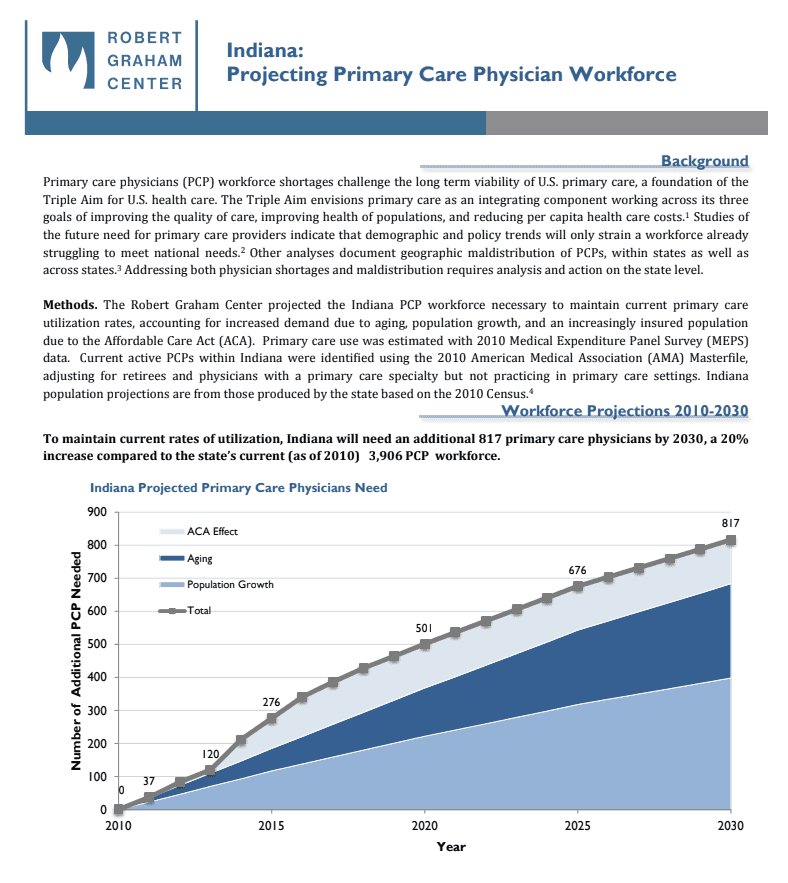Primary care physician shortage is a significant concern in Indiana and the entire country.
The average wait for an onsite appointment with a physician is 26 days, and that is in metropolitan areas. If you live in a rural community, it could be months.
Several factors contribute to this shortage of Primary Care Doctors.
- Aging Population: As populations age, there is an increased demand for healthcare services. Older individuals typically require more frequent medical attention for chronic conditions and age-related health issues.
- Physician Burnout: Primary care physicians often experience high levels of burnout due to heavy workloads, administrative burdens, and long hours.
- Declining Interest in Primary Care: Medical students are increasingly opting for specialty fields over primary care due to factors such as higher earning potential, perceived prestige, and better work-life balance.
- Financial Pressures: Primary care physicians often face lower reimbursement rates compared to specialists, making it financially less attractive to pursue a career in primary care.

It is estimated Indiana has 3,900 Primary Care Physicians and will need another 800 by 2030 to maintain current levels of care.
The medical and health insurance industries have started to pivot to video and tell medicine. Most insurance contracts have changed in the last few years to provide reimbursement for telephonic medicine to primary care doctors.
Video medicine is excellent and highly convenient, but what most don’t know is that there is a reluctance to treat a recurring condition with video medicine. They may treat it once, but if it recurs, they may refer you to primary care.
Market Solutions to Primary Care Shortage.
Alternative Healthcare Models
Concierge Medicine
A healthcare model in which patients pay an annual fee to a primary care physician or practice in exchange for enhanced access to medical services. This model often emphasizes personalized, patient-centered care and typically involves a smaller patient panel, allowing for more time and attention devoted to each patient.
Patients often have 24/7 access to physicians via phone, email, or secure communication platforms. This model of care comes with a cost of up to $5,000 a year.
Direct Primary Care
A healthcare model where patients pay a monthly membership fee to a physician or practice in exchange for comprehensive primary care services. Unlike traditional fee-for-service models or concierge medicine, DPC focuses on providing affordable, accessible, and personalized care directly to patients without involving insurance companies for routine services. This model of care can cost up to $150 a month.
For those with means, the alternative models of care is becoming very popular. These practices are growing with adding additional physicians and locations. We are seeing seasoned physicians leave large medical practices to launch their own practice. https://valordpc.com/

